Our impact on environment
Embracing decarbonisation
As both a manufacturer and a solutions provider, we look for opportunities, both in our own processes and in support of our customers’ operational activities, to reduce our operational climate footprint. We do that by leveraging our technology-based portfolio and making conscious design and production choices: monitoring data, avoiding waste, prioritising effective energy and emissions management, and focusing on low-carbon solutions. We align our environmental disclosures with the European Sustainability Reporting Standards (ESRS): E1 Climate change, E2 Pollution, E3 Water and marine resources, E4 Biodiversity, E5 Resource use and circularity.
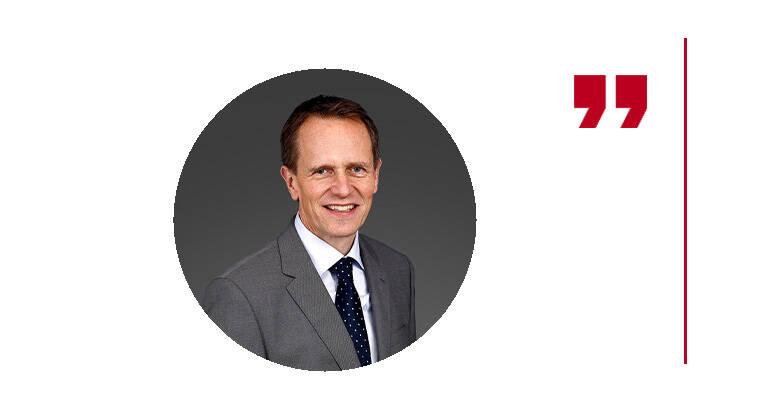
‘We aim to be a leader on climate action, and act responsibly on other environmental issues’
Per Fyrenius,
Senior Vice President Corporate Development
Our commitment towards Net Zero
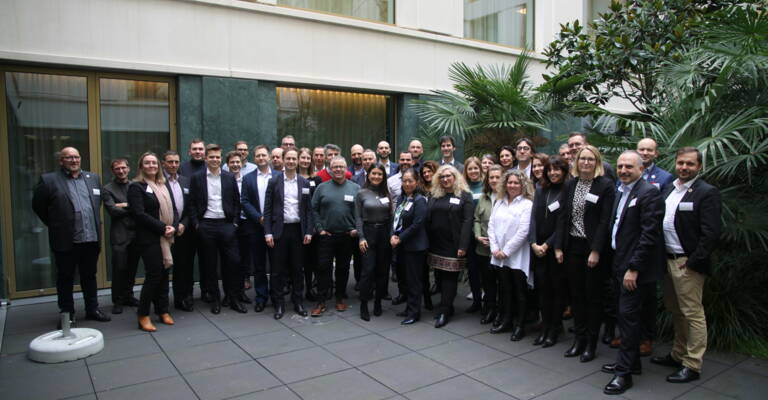
Our science-based targets clearly
define the path to decarbonisation
We remain committed to leading on climate action. In October 2023, we submitted our science-based targets to the SBTi for approval, which helped us establish our corporate carbon footprint base year and prioritise key decarbonisation levers. While we wait for SBTi approval, we are planning to ensure we have the resources needed to speed up emissions reduction and reach those targets.
Working towards net zero
Starting with this data, we are counting down to net zero. Our current target to reach net-zero carbon across all three scopes is set to 2050. Our updated targets will get disclosed during 2024 upon approval from SBTi.
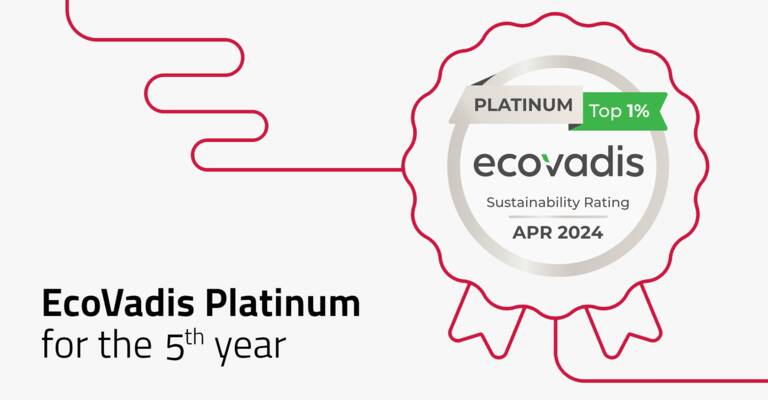
Mobilising our value chain using the EcoVadis platform
Environment is one of the four areas which EcoVadis scores us on -and the area where we receive the highest ‘outstanding’ rating of 90%.
In parallel, we continue engaging with customers, suppliers, employees and society at large to accelerate decarbonisation. Since our previous report, we have invited partners to the EcoVadis platform to increase ESG transparency. Additionally, over 200 suppliers shared their carbon maturity rating with us on the EcoVadis platform.
Read about E1 - Climate change in our sustainability report >>
Environmental performance
Certified environmental management
to identify risks and assess impacts
Certified ISO 14001 compliant environmental management procedures are in place in all our factories and are being implemented in all our sales companies. All major suppliers are equally expected to be ISO 14001 certified and required to sign our Code of Conduct for Suppliers, which sets out specific requirements on pollution control from our suppliers. The EcoVadis assessment we are rolling out to all our suppliers will also enable us to manage the upstream risk.
According to EU REACH regulation, the company has a duty to inform customers on all our products containing a substance of very high concern (SVHC). We update our REACH letter on our website annually to ensure our customers have access to this data.
Water conservation
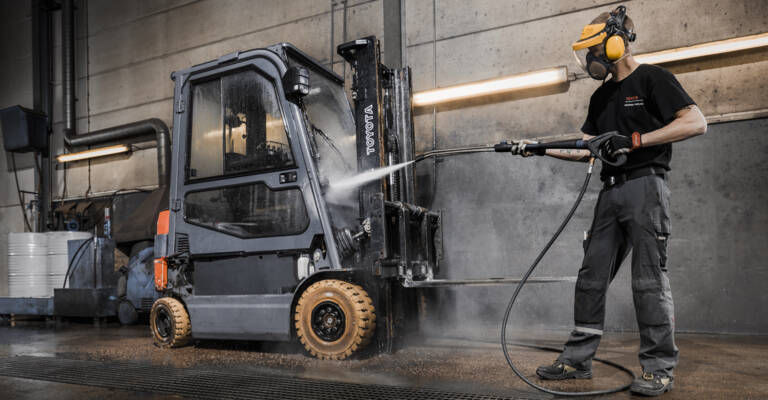
A scarce and valuable natural resource:
we monitor our water consumption
As a manufacturer of forklift trucks, our stakeholders consider it unlikely that our own operations have a material impact on water and marine resources. Nevertheless, water abstraction data across our European network is available and our factories are mainly assembly plants with limited water withdrawals. If there are any material impacts across our value chain, they are likely to be found in upstream value chain activities.
As part of Toyota Industries Corporation (TICO), we are also rated A- in the CDP (Carbon Disclosure Project - runs the global disclosure system for companies' environmental performance) water security questionnaire.
Read about E3 – Water and marine resources in our sustainability report >>
Ecosystem vulnerability
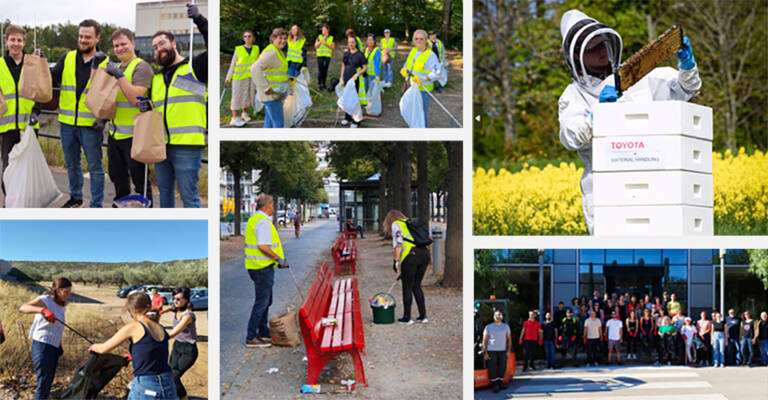
Protecting biodiversity of the
geographic area we operate in
As a manufacturer of forklift trucks, our stakeholders consider it unlikely that our operations have a material impact on local biodiversity, but we will be conducting a risk assessment at European level to confirm this. In our industry, biodiversity impacts are more concentrated upstream in our supply chain, which is why biodiversity is integrated in our Code of Conduct for Suppliers.
Read about E4 – Biodiversity in our sustainability report >>
Transforming to circular
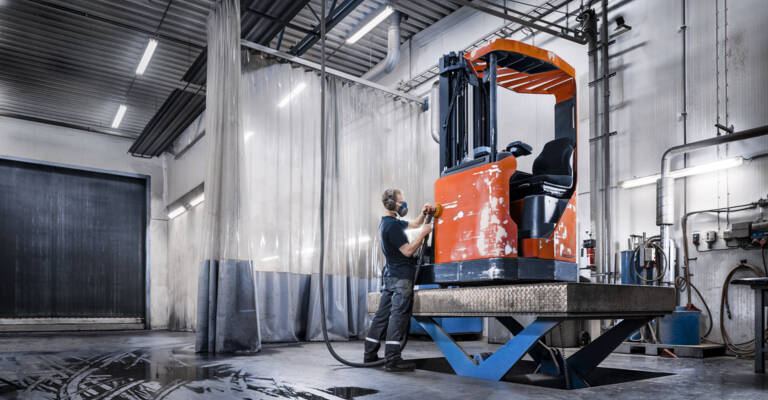
Eliminating waste is also redesigning
materials, products, and services.
Circular business model innovation is a way to remain competitive and address sustainability issues. As a cornerstone of the EU Green Deal, we see a substantial change in EU legislation concerning this area. We are actively working with experts to develop a risk map and a circularity roadmap and expect to see continuous improvements across our value chain.
Zero muda: materials regenerated
We already restore and reutilise roughly 60% of our rental fleet returns for second life as used trucks sold to our direct customers, managed directly by our Marketing & Sales Companies. An additional 30% is reutilised through non-direct customers, i.e. independent distributors or traders.
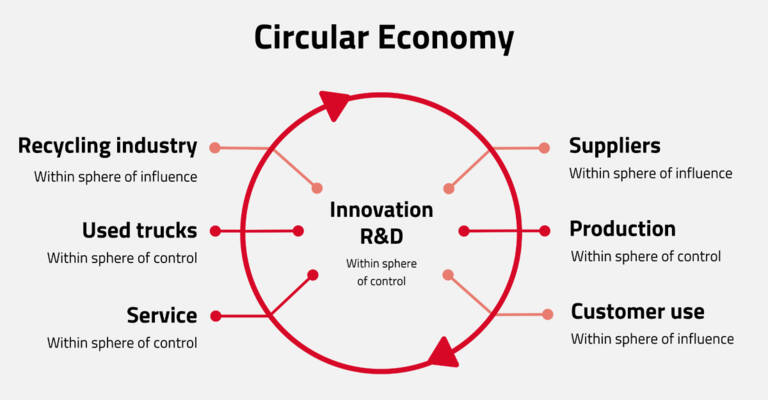
Circular rental & service innovation
Our refurbishment capacity is continuously being extended across our European network, and approximately 40% of second-life machines from direct customers re-enter our rental schemes to support customer applications.
Service is also an integral part of our approach to maximise the lifetime of our trucks. To minimise waste and improve circularity, we want to boost these numbers by running internal programmes focused on identifying first and second-life opportunities for trucks and batteries.
Read about E5 – Resource use and circularity in our sustainability report >>
Our sustainability approach

Governance
How we maximise quality and customer safety


